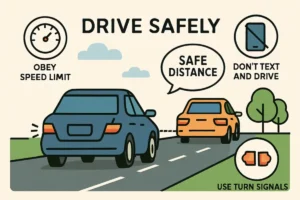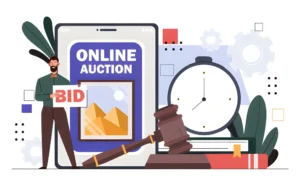When I first dove into learning English, it amazed me how mastering just a few small words – like possessive nouns – could instantly make my writing more clear and confident. These tools carry serious weight in your sentence structure. They’re not just about adding an apostrophe or an “s.” They communicate ownership, add precision to expression, and sharpen the meaning of what you’re trying to say. I learned this firsthand when I wrote, “the dogs tail wagged,” and a friend showed me how missing the mark changed the whole message. That single moment made me pay close attention to rules, exceptions, and proper use of possessives.
Since then, I’ve relied on an in-depth guide filled with real-world examples – always sitting nearby on my desk. It helps me spot the correct structure and endings for each noun type. What stands out most is how proper grammar isn’t about sounding overly formal – it’s about being understood. When you write with control over your possessive form, your words become clean, easy to follow, and free of confusion. Especially in formal contexts, one misplaced mark can disrupt the intended message. Whether you’re a student or a seasoned pro, understanding these comparisons between different styles ensures you make the right call every single time.
Why Possessive Nouns Matter in Fluent, Accurate Writing
Have you ever read a sentence like, “The clients documents were reviewed” and found yourself momentarily confused? A simple apostrophe could have clarified it: “The client’s documents were reviewed.” That single punctuation mark made a difference.
Possessive nouns signal ownership. When used right, they help the reader understand who owns what, who is affected, or how things relate. Whether you’re writing emails, reports, or stories, mastering possessive nouns boosts clarity and authority.
What Are Possessive Nouns?
A possessive noun shows ownership or a relationship between one noun and another. In most cases, that ownership is signaled by an apostrophe and sometimes the letter “s.”
Examples:
- The teacher’s desk (desk belongs to the teacher)
- The dog’s collar (collar belongs to the dog)
How Apostrophes Show Possession
The apostrophe is the main signal that a noun is possessive. But where it goes depends on whether the noun is singular or plural.
Basic Rules:
| Type of Noun | Rule | Example |
| Singular | Add ‘s | the cat’s toy |
| Plural ending in “s” | Add only ‘ | the teachers’ lounge |
| Irregular plural | Add ‘s | the children’s books |
Important Tip:
Don’t use apostrophes with possessive pronouns like hers, yours, its. They are already possessive.
Constructing Singular Possessive Nouns
Singular possessive nouns are usually easy to form.
How to do it:
- Add ‘s to the end of a singular noun.
Examples:
- John’s laptop
- The bird’s nest
- The company’s revenue
These examples show ownership or association with a singular noun.
Special Case: Singular Nouns Ending in ‘S’
This is where many writers get stuck. If a singular noun ends in “s,” should you write James’s book or James’ book?
The Rule Depends on Style Guide:
| Style Guide | Rule | Example |
| Chicago Manual of Style | Add ‘s | James’s car |
| Associated Press (AP) | Add only ‘ | James’ car |
Best Practice:
Be consistent. If you’re writing for a company or publication, follow their preferred style guide.
Forming Plural Possessive Nouns
Plural possessive nouns follow a slightly different rule.
General Rule:
- If a plural ends in “s,” just add an apostrophe.
- If the plural does NOT end in “s,” add ‘s.
Examples:
- The parents’ evening (plural: parents)
- The men’s locker room (irregular plural: men)
Quick Table:
| Plural Noun | Possessive Form |
| cats | cats’ toys |
| babies | babies’ cribs |
| children | children’s games |
Possessive Pronouns vs. Possessive Nouns
It’s easy to confuse these because both show ownership. But there’s a key difference:
Possessive Pronouns
- Stand in for a noun
- Don’t need apostrophes
Examples:
- This book is hers.
- That seat is mine.
Possessive Nouns
- Are actual nouns showing ownership
- Use apostrophes
Examples:
- This is Lisa’s coat.
- We’re going to the manager’s office.
Possessive Adjectives vs. Possessive Pronouns
Possessive adjectives come before a noun and describe it. Possessive pronouns replace the noun.
Comparison Table:
| Type | Examples | Use In a Sentence |
| Possessive Adjective | my, your, her, his, their | That is my car. |
| Possessive Pronoun | mine, yours, hers, his, theirs | That car is mine. |
Double Possessives and Complex Ownership
A double possessive combines “of” with an apostrophe phrase.
Example:
- A friend of Tom’s.
It sounds odd, but it’s correct and used when the noun is indefinite (like friend, student, etc.).
Compound Ownership:
- Emma and Jake’s apartment (shared)
- Emma’s and Jake’s laptops (individual)
Tip:
The apostrophe placement shows whether the ownership is joint or separate.
Time, Quantity & Inanimate Object Possession
Time-based Possession
- A day’s work
- Two weeks’ notice
These expressions use possessive nouns even if they seem unusual.
Quantities
- A dollar’s worth
- Ten minutes’ walk
Inanimate Objects
Some style guides frown upon using possessives with inanimate objects (like “the table’s leg”) and prefer “the leg of the table.” Others accept both.
Common Possessive Mistakes to Avoid
Here are frequent slip-ups to watch out for:
Top Mistakes:
- Its vs. It’s
- Its = possessive (The dog wagged its tail.)
- It’s = contraction for “it is” or “it has”
- Your vs. You’re
- Your = possessive (Is this your pen?)
- You’re = contraction (You’re doing great!)
- Using apostrophes to form plurals
- Incorrect: The cat’s are playful
- Correct: The cats are playful
Writing Tips: Use Possessives Effectively
Writing with possessives doesn’t mean just using apostrophes correctly. It’s about choosing concise, impactful sentence structures.
Tips:
- Choose noun phrases over “of” structures for tight writing
- Weak: The report of the manager was published.
- Strong: The manager’s report was published.
- Avoid unnecessary complexity
- Don’t say: The bag belonging to Maria.
- Instead: Maria’s bag
- Use in branding or slogans effectively
- America’s Got Talent, McDonald’s, Trader Joe’s
Case Studies: Real-World Use of Possessives
Legal Contracts
Possessives ensure clarity in responsibility.
- The employee’s duties are outlined clearly.
- The company’s assets must be protected.
Journalism & Media
Media follows specific style guides (often AP).
- Reuters’ headquarters (AP style)
- Children’s Hospital (irregular plural possessive)
Web & UX Writing
Clean possessive use builds trust.
- Your account’s privacy settings vs. Privacy settings of your account – The first feels more direct and human.
Conclusion
Mastering possessive nouns unlocks a new level of clarity and professionalism in your writing. From emails to contracts, blog posts to branding, understanding how to form and use them gives your message precision and polish.
Keep this guide handy. Revisit the rules, style tips, and real-world examples as you grow as a writer. When in doubt, ask yourself: Who owns what? Then apply the right rule.
FAQs
Can inanimate objects have possessive nouns?
Yes, though style guides differ. The table’s edge is widely accepted, but some prefer the edge of the table.
How do you show joint vs. individual possession?
- Mark and Jane’s house (they share it)
- Mark’s and Jane’s phones (each has their own)
Is it ever okay to say “a friend of John’s”?
Yes. It’s called a double possessive and is correct when referring to one of multiple.
Do possessive nouns always need apostrophes?
No. Pronouns like his, hers, theirs are already possessive and don’t need apostrophes.











